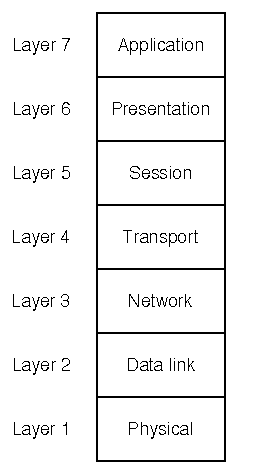
|
|

OSI Reference Model
Industry standards either have been or are being defined at each layer of the Reference Model. Two standards are defined at each layer: one that specifies an interface to the services of the layer, and one that defines the protocol by which services are provided. A service interface standard at any layer frees users of the service from details of how that layer's protocol is implemented, or even which protocol is used to provide the service.
The transport layer is important because it is the lowest layer
in the Reference Model that provides the basic service of reliable,
end-to-end data transfer needed by applications and higher layer
protocols.
In doing so, this layer hides the topology and characteristics of the
underlying network from its users.
More important, however, the transport layer defines a set of services
common to layers of many contemporary protocol suites, including
the International Standards Organization (ISO)
protocols, the Transmission Control Protocol and Internet Protocol
(TCP/IP)
of the
ARPANET,
Xerox Network Systems (XNS ),
and the Systems Network Architecture (SNA).
),
and the Systems Network Architecture (SNA).
A transport service interface, then, enables applications and higher layer protocols to be implemented without knowledge of the underlying protocol suite. That is a principal goal of the UNIX system Transport Interface. Also, because an inherent characteristic of the transport layer is that it hides details of the physical medium being used, the Transport Interface offers both protocol and medium independence to networking applications and higher layer protocols. Because the Transport Interface provides reliable data transfer, and because its services are common to several protocol suites, many networking applications will find these services useful.
The UNIX system Transport Interface was modeled after the industry standard ISO Transport Service Definition (ISO 8072). The resulting interface was called the Transport Level Interface (TLI) library. The TLI library functions have been modified to comply with the X/Open Transport Interface (XTI) specification. Both the TLI and the XTI library interfaces are available as part of the UNIX system Transport Interface. Applications compiled on releases of UnixWare prior to UnixWare will get TLI semantics. However, new applications will be compiled so as to call the new XTI library interfaces.
The Transport Interface is implemented as a user library using the STREAMS input/output mechanism. Therefore, many services available to STREAMS applications are also available to users of the Transport Interface. These services will be highlighted throughout this topic. For detailed information about STREAMS, see the Developing STREAMS modules and drivers or Programming with system calls and libraries.